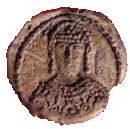 W
WThe Battle of Achelous or Acheloos, also known as the Battle of Anchialus, took place on 20 August 917, on the Achelous river near the Bulgarian Black Sea coast, close to the fortress Tuthom between Bulgarian and Byzantine forces. The Bulgarians obtained a decisive victory which not only secured the previous successes of Simeon I, but made him de facto ruler of the whole Balkan Peninsula, excluding the well-protected Byzantine capital Constantinople and the Peloponnese.
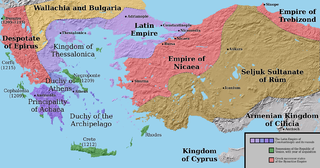 W
WThe Battle of Adrianople was fought in 1254 between the Byzantine Greek Empire of Nicaea and the Bulgarians. Michael Asen I of Bulgaria tried to reconquer land taken by the Empire of Nicaea, but the swift advance of Theodore II Lascaris caught the Bulgarians unprepared. The Byzantines were victorious.
 W
WThe battle of Anchialus occurred in 763, near the town of Pomorie on the Bulgarian Black Sea Coast 42°33′N 27°39′E. The result was a Byzantine victory.
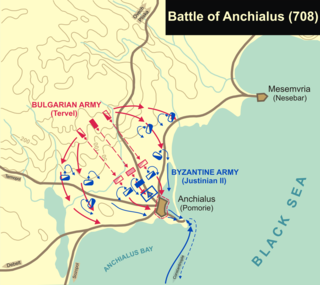 W
WThe Battle of Anchialus occurred in 708 AD near the modern-day town of Pomorie, Bulgaria 42°33′N 27°39′E.
 W
WThe battle of Arcadiopolis occurred in 1194 near the modern town of Lule Burgas in Turkey between the Bulgarian Empire and the Byzantine Empire. The Bulgarians were victorious.
 W
WThe Battle of Litosoria or Lithosoria occurred between the Byzantines and Bulgars in the fall of 774 at an unknown place named Litosoria. It was located in the border area between both states, in the region of Zagore, probably north of the line Kirklareli - Vize in modern Turkey. The result was a Byzantine victory.
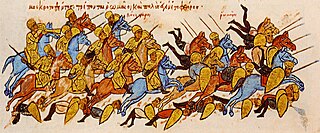 W
WThe Battle of Boulgarophygon or Battle of Bulgarophygon was fought in the summer of 896 near the town of Bulgarophygon, modern Babaeski in Turkey, between the Byzantine Empire and the First Bulgarian Empire. The result was an annihilation of the Byzantine army which determined the Bulgarian victory in the trade war of 894–896.
 W
WThe Battle of the Gates of Trajan was a battle between Byzantine and Bulgarian forces in the year 986.
 W
WThe Battle of Klokotnitsa occurred on 9 March 1230 near the village of Klokotnitsa between Second Bulgarian Empire and Empire of Thessalonica. As a result, Bulgaria emerged once again as the most powerful state in South-Eastern Europe. Nevertheless, Bulgarian power was soon to be contested and surpassed by the rising Empire of Nicaea.
 W
WThe battle of Marcellae took place in 756 between the armies of the First Bulgarian Empire and the Byzantine Empire at Markeli, near the town of Karnobat in south eastern Bulgaria. The result was a Byzantine victory.
 W
WThe Battle of Marcellae took place in 792 at Marcellae (Markeli), near the modern town of Karnobat in south eastern Bulgaria, the same site as an earlier battle in 756. The battle was between the forces of the Byzantine Empire, led by Constantine VI, and those of Bulgaria under Kardam. The Byzantines were routed and forced to retreat to Constantinople.
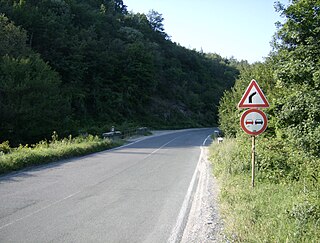 W
WThe Battle of the Rishki Pass or Battle of Veregava took place in the pass of the same name, in Stara Planina, Bulgaria in 759. It was fought between the Bulgarian Empire and the Byzantine Empire. The result was a Bulgarian victory.
 W
WThe Battle of Rusokastro occurred on July 18, 1332 near the village of Rusokastro, Bulgaria, between the armies of the Bulgarian and Byzantine Empires. The outcome was a Bulgarian victory
 W
WThe Battle of Skafida was an engagement between the Second Bulgarian Empire and the Byzantine Empire which occurred in 1304 near Poros (Burgas), modern Bulgaria. The outcome was a Bulgarian victory. As a result, the Bulgarian Empire overcame the crisis from the end of the 13th century, achieved internal stability and regained most of Thrace. For a time afterwards, Byzantium was not a serious threat to it.
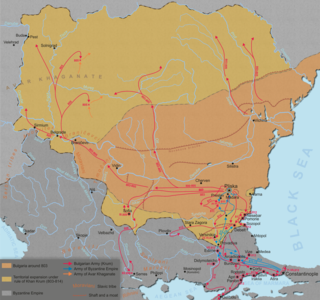 W
WThe Battle of Versinikia was fought in 813 between the Byzantine Empire and the Bulgarian Empire, near the city of Adrianople (Edirne).